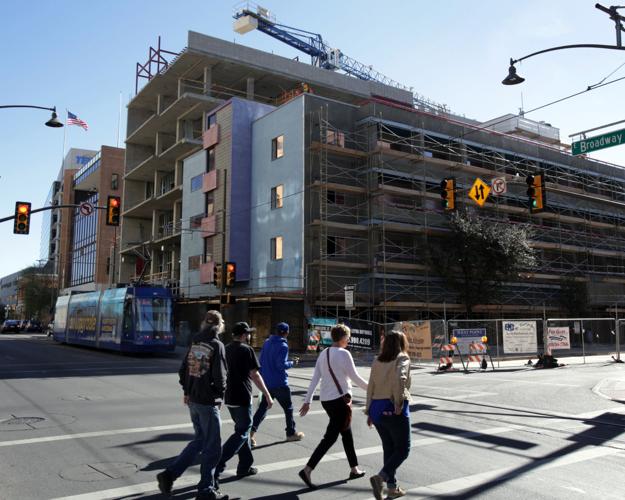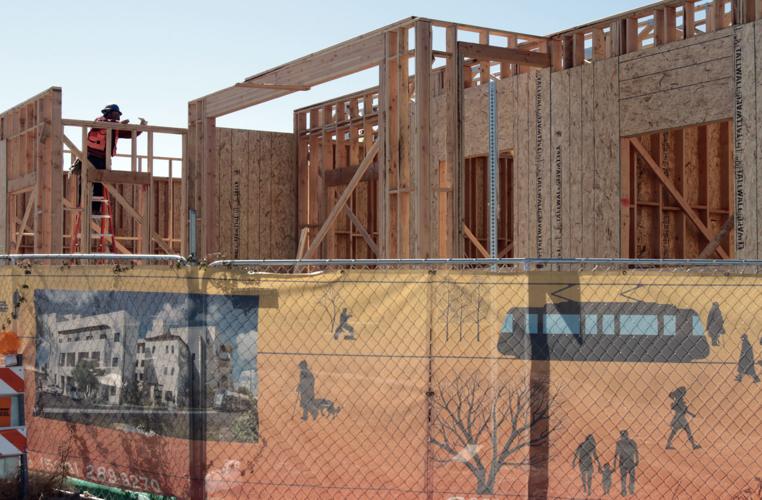As local home prices and rents continue to rise, Tucsonans in need of affordable housing are struggling.
More than 18,000 families are on the waiting list for Section 8 housing, and no new applicants are being accepted at this time.
With the lure of higher rents on the open market, some landlords are not participating in the program, adding to the shortage. Average rental rates for all types of housing were around $800 in 2017.
There are about 700 apartments, townhouses, guest houses and mobile homes available through the program, which provides rent subsidies, and only about 50 of those are single-family homes.
“We have tremendous need for more affordable housing,” said Sally Stang, director of the city’s Housing and Community Development Department. “Our community needs 60,000 more units in order to fill the need.”
High-wage job announcements by companies such as Caterpillar, Raytheon and Hexagon Mining — while good news — are exacerbating the problem, said Marcos Ysmael, the affordable-housing program manager for Pima County.
“Some of the recent gains in jobs are going to be more specialized, and most of those people are going to be imported, unfortunately,” he said. “And, they’re going to snap up the low-hanging fruit because no matter your income, you’re going to be looking for affordability.
“Middle-income and low-income families are competing for the same housing.”
Rental rates have been steadily rising in the Tucson area and median new-home prices hit a record high of nearly $299,000 in 2017.
“Low-income homebuyers can’t even consider new homes,” Ysmael said. “Production is not keeping up with the need as market-rate builders are meeting the needs of higher-income buyers and retirees looking for second homes.”
Local wages are not rising at the same rate as rents.
“The increase in minimum wage has helped but has also caused layoffs in small businesses.”
DRAWING INTEREST
One fairly new trend seen by housing authorities is people from different parts of the country inquiring about Section 8 housing in the Tucson market.
“People are finding us in other jurisdictions,” Ysmael said.
Stang, whose department administers the Section 8 housing voucher program, said there is a residency preference.
“We provide preference to people who work in Pima County,” she said. “A family that applies that has no local connection is not being served.”
To qualify for vouchers, the household income must be under 50 percent of the median income, individuals must pass a background check and one member of the family must have legal immigration status.
Once qualified, renters pay 30 percent of their monthly income in rent, and the voucher pays the difference.
The program manages 5,654 vouchers a year with an average housing assistance of $514 per month, Stang said.
“There’s such a demand and such a need that we really need to be more creative and collaborative with, not just government, but nonprofits,” Stang said. “All of us need to be brave and try new strategies; we understand resources are limited.”
UNDERSTANDING
THE NEED
Streamlining the process for landlord participation in the Section 8 program is critical.
Ginny Huffman, who owns rental management company Imagine Realty Services Ltd., said the bureaucracy is a turnoff for some of her landlord clients.
“Section 8 can’t change gears,” she said. “Being a government-run agency, they’re very slow to accept change.”
Valuation and inspection times are long and onerous for the owner.
“If they can command higher rent on the open market,” Huffman said, “that’s where we’re going.”
Stang acknowledged struggles in the department as vacancies, due to retirements and buyouts, had an impact.
“We’ve had some bumps in the road,” she said.
A new software program launching July 1 will feature a landlord portal with up-to-date information on inspections and electronic rent payments.
The department and affiliated nonprofits also host open-house events to walk landlords through the system, Stang said.
“Our message to landlords is, ‘As rents push up, yes, you may be able to command higher rents, but give it a try,’” she said. “It’s a partnership.”
Stang said more than 60 percent of Section 8 participants are elderly or disabled.
“Sometimes the Section 8 program gets a bad name … that the tenants are lazy and don’t want to work,” she said. “If you look at the demographics, that’s not true.
“It’s important to remember the need.”






